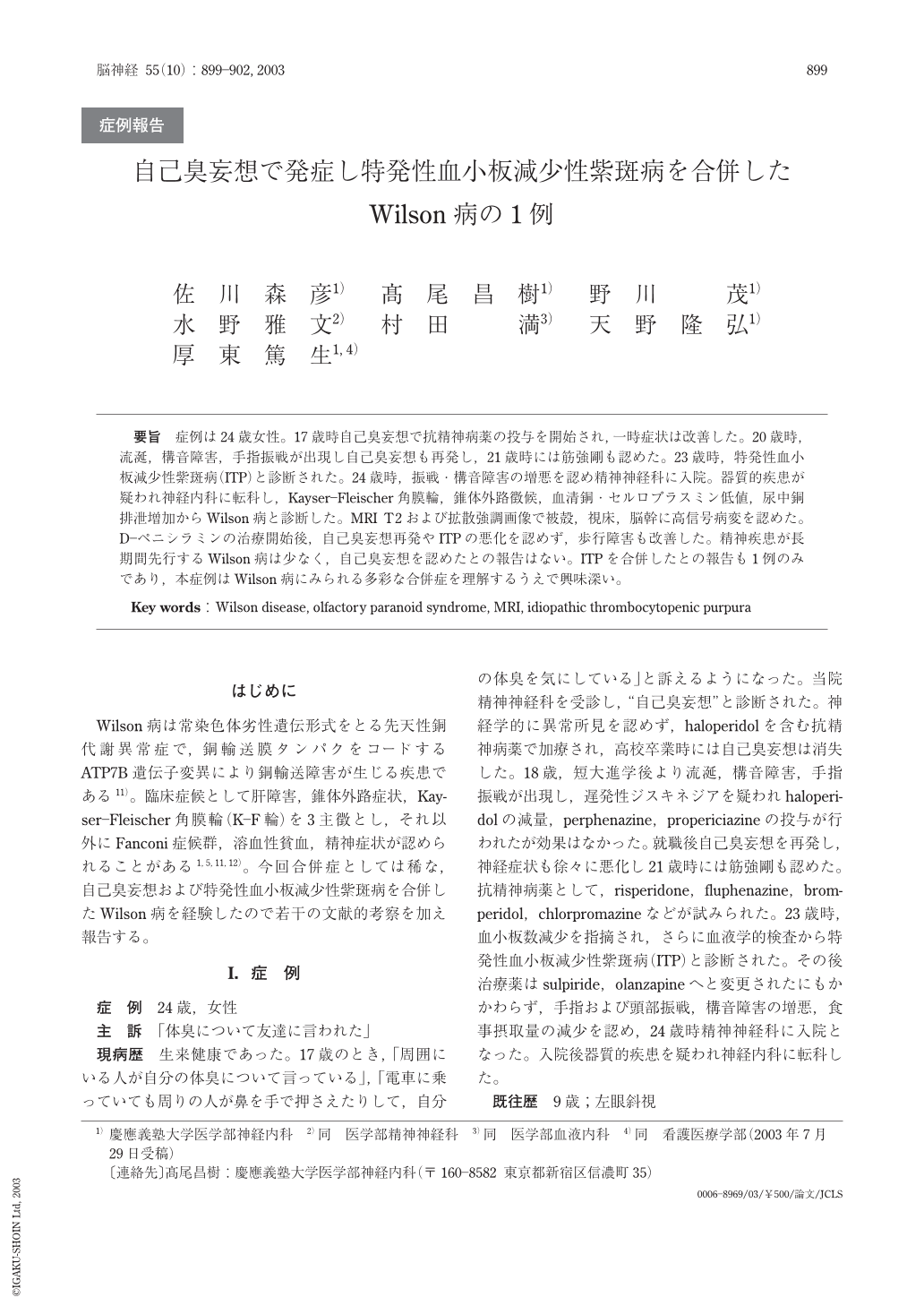Japanese
English
- 有料閲覧
- Abstract 文献概要
- 1ページ目 Look Inside
要旨 症例は24歳女性。17歳時自己臭妄想で抗精神病薬の投与を開始され,一時症状は改善した。20歳時,流涎,構音障害,手指振戦が出現し自己臭妄想も再発し,21歳時には筋強剛も認めた。23歳時,特発性血小板減少性紫斑病(ITP)と診断された。24歳時,振戦・構音障害の増悪を認め精神神経科に入院。器質的疾患が疑われ神経内科に転科し,Kayser-Fleischer角膜輪,錐体外路徴候,血清銅・セルロプラスミン低値,尿中銅排泄増加からWilson病と診断した。MRIT2および拡散強調画像で被殻,視床,脳幹に高信号病変を認めた。D-ペニシラミンの治療開始後,自己臭妄想再発やITPの悪化を認めず,歩行障害も改善した。精神疾患が長期間先行するWilson病は少なく,自己臭妄想を認めたとの報告はない。ITPを合併したとの報告も1例のみであり,本症例はWilson病にみられる多彩な合併症を理解するうえで興味深い。
In this study we report an individual of Wilson's disease associated with olfactory paranoid syndrome and idiopathic thrombocytopenic purpura. The initial symptom of this female patient was olfactory paranoia at age 17. Although that psychiatric symptom was well controlled under pharmacological treatment for two years, she developed olfactory paranoia as well as sialorrhea, dysarthria and finger tremor at age 20. A year later rigidity was also present in the extremities. At age 23, idiopathic thrombocytopenic purpura was found based on hematological examinations. Because her extrapyramidal symptoms were progressive, she was referred to our department to evaluate her neurologic condition. She was diagnosed as having Wilson's disease based on (1) the presence of Kayser-Fleischer rings, (2) extrapyramidal signs, and (3) a decreased level of serum copper and ceruloplasmin. T2 and FLAIR images of brain MRI showed hyperintense lesions in the putamen, thalamus and pontine tegmentum. Diffusion-weighted images also showed hyperintense lesions in the thalamus and pontine tegmentum. The biopsy specimen of the liver revealed chronic hepatitis with copper accumulation. Since D-penicillamine treatment was initiated, she has shown no olfactory paranoia and exacerbation of ITP. Her gait disturbance has also improved. Olfactory paranoia and ITP are rare clinical complications of Wilson's disease. Further analysis may warrant consideration of the pathophysiological mechanism of the psychiatric, hematological and neuroradiological condition seen in Wilson's disease.

Copyright © 2003, Igaku-Shoin Ltd. All rights reserved.


